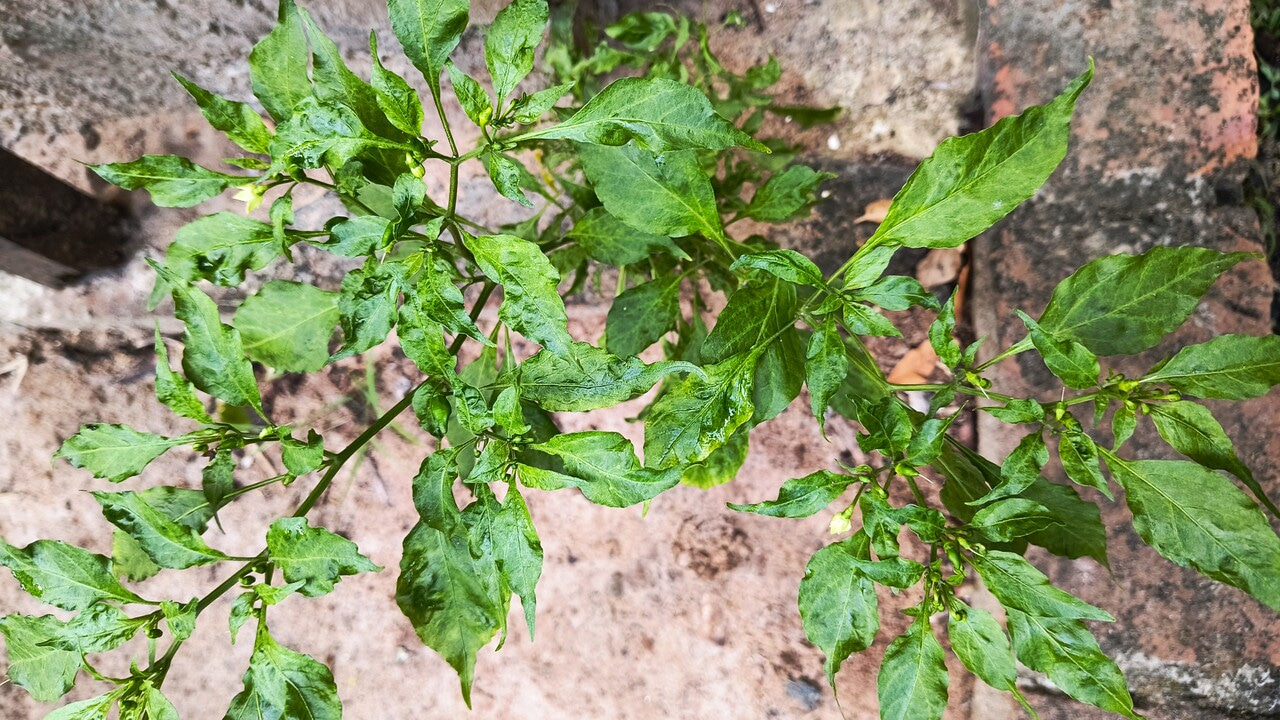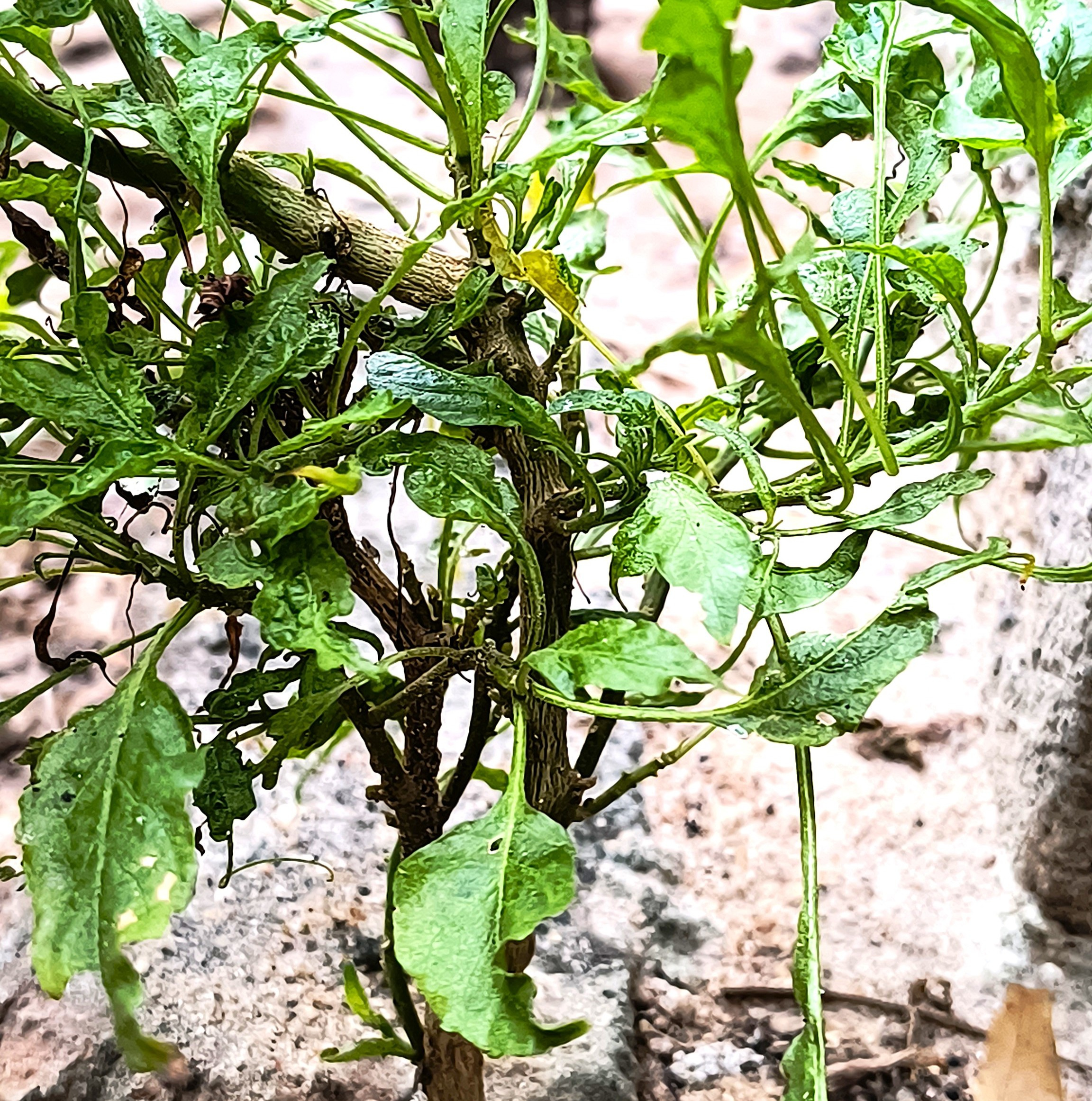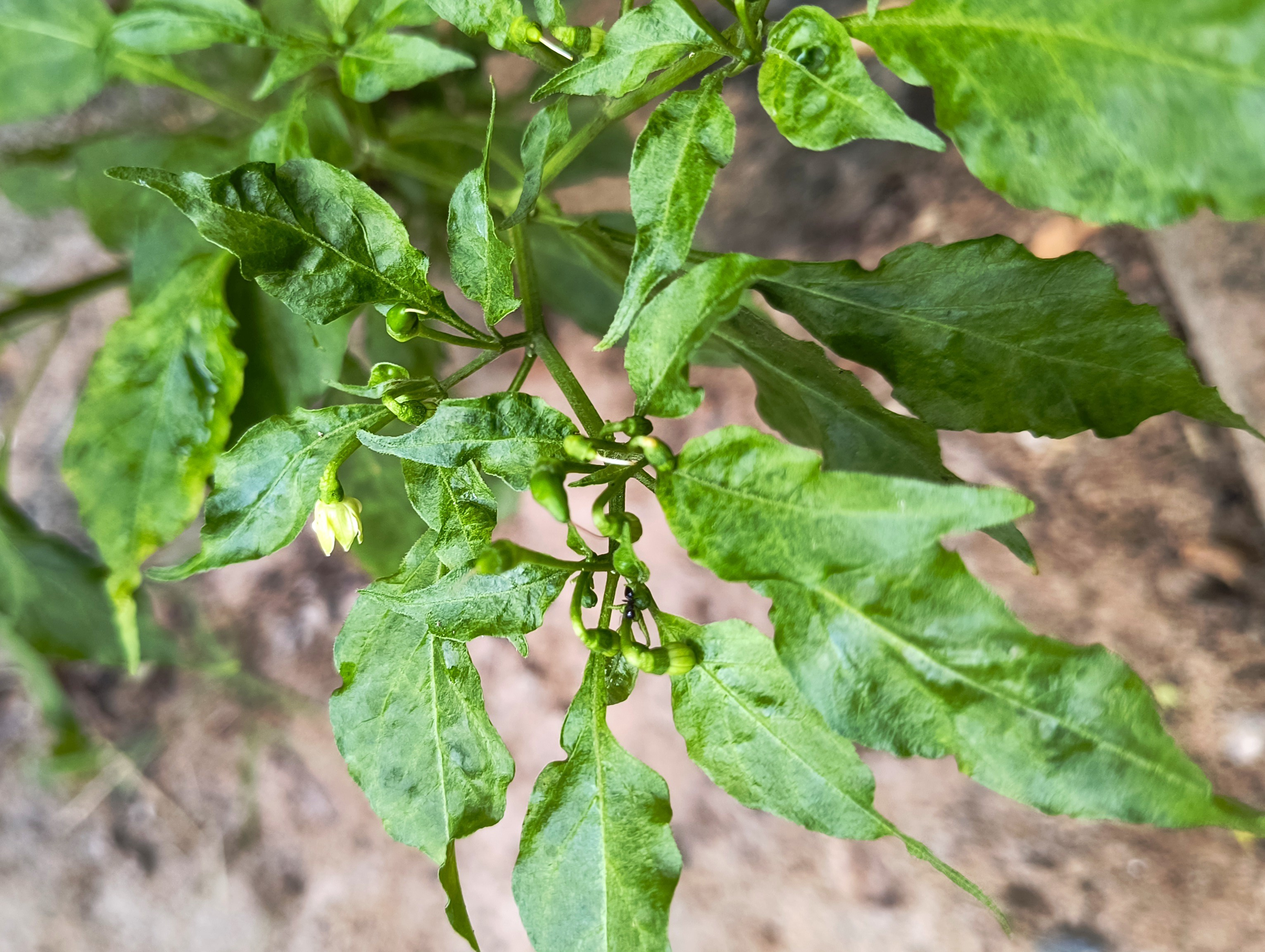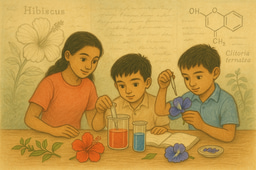

Capsicum frutescens is a wild pepper species. Though its origin lies in South America, it has naturalized in many parts of the world, including Sri Lanka. Here, nobody plants it deliberately. In fact, there’s even a saying that “they won’t grow if you plant them.” In our family garden too, no one puts seeds in the soil; the birds do the job for us. They scatter the seeds, and the plants appear wherever they please. Our role is simply to enjoy the fruits. These peppers bring a fiery kick and a unique aroma that other pepper species cannot match, adding a special touch to Sri Lankan dishes.
Months ago, I noticed a tiny pepper plant sprouting between the clay bricks behind our outdoor kitchen. At first it looked healthy, green, and full of promise. But soon it fell ill. The leaves curled severely, and the plant seemed trapped in sickness. As someone curious about plants, I observed it closely. I saw no pests, and since the spot often received water from kitchen washings, it couldn’t be drought stress. Perhaps it was a virus, perhaps another disease. Whatever the cause, it seemed hopeless. After all, this was just a wild plant, more weed than crop.

For months, it stayed that way: short, stunted, and twisted. Barely 10 centimeters tall, with curled leaves that made it look like a different species altogether. I passed by it every day when sweeping the yard, barely giving it a second thought. We had plenty of healthy pepper plants in the garden; who would care about this sickly one?
Then I went away for some time. When I returned and resumed my daily chores, I glanced again at the little plant. To my surprise, it had transformed. No longer stunted, it had grown three to four times taller, covered in blooms and dotted with tiny fiery fruits. Against all odds, it had recovered.
That’s when the thought struck me: sometimes, patience is the answer.
In life, whether in everyday struggles, careers, research, or your lab experiments, we often panic when things don’t go the way we want. A delay feels like failure, a setback feels permanent. We rush to fix things quickly, to force an outcome, to control every detail. But in our hurry, we sometimes make things worse, draining ourselves of energy and hope.

Like that pepper plant, sometimes the best path is not immediate action, but quiet endurance. Patience does not mean doing nothing; it means holding steady, allowing time to do its work, and trusting that growth can happen in ways we cannot yet see. Just as the plant stood still for months, appearing weak and hopeless while silently rebuilding itself, bringing all its defenses, we too need moments of pause. In those pauses, we find space to recover, to rethink our direction, and to prepare for our best moves.
Patience is not weakness; it is strength in disguise. It gives us the chance to heal from setbacks, to notice new possibilities, and to return with greater clarity. In the same way the pepper waited until it was ready to bloom and fruit, we can also give ourselves permission to wait for the right time, rather than forcing growth before its season has come.
The plant had spent months in a kind of stillness, holding on quietly and protecting itself, as if gathering strength for a better season. It looked weak on the outside, but inside it was preparing for the moment it could rise again. And when that moment arrived, it did not grow little by little, it burst forward, tall and confident, covered in bright green leaves and fiery fruits.
When you think about the short life cycle of a pepper plant, those five or six months of struggle must have felt like an eternity. Yet the lesson is clear: what matters in the end is not the long wait or the slow progress, but the outcome. It is the recovery, the blooming, the harvest that stays in memory. The struggle fades, but the result shines.
That little Capsicum frutescens reminded me of something important today: the power of patience. Thank you for the lesson, tiny pepper. May we all find the strength to endure, and the courage to bring out our best at the right time.
Reference
https://powo.science.kew.org/taxon/urn:lsid:ipni.org:names:316959-2
https://www.rhs.org.uk/plants/157406/capsicum-frutescens/details
Grube, Rebecca C., et al. "New source of resistance to Cucumber mosaic virus in Capsicum frutescens." Plant disease 84.8 (2000): 885-891.
Keser, Serhat, et al. "Phytochemical composition, antiradical, antiproliferative and antimicrobial activities of Capsicum frutescens L." Analytical Chemistry Letters 8.5 (2018): 642-652.


Please sign in or register for FREE
If you are a registered user on Research Communities by Springer Nature, please sign in